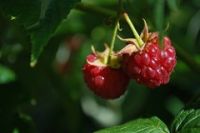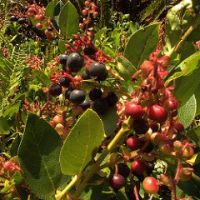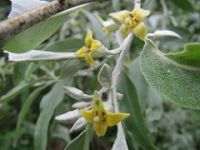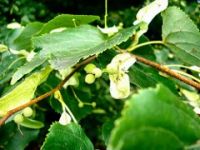Plants For A Forest Garden – Shrub Layer
Beneath the tall trees that are the highest layer of the forest garden you will usually find small trees and shrubs that can tolerate a little dappled shade from the canopy above. This can be a pivotal layer in the ecosystem of an establishing forest garden and can provide a significant quantity of food as well as feeding the system and providing other resources. This is usually the second layer that you will plan after you have planned the upper tree layer or layers.
 Berry Bushes:
Berry Bushes:
Many bushes will thrive in the dappled shade of a temperate climate forest garden or on the edge of one. Try classic soft fruits such as raspberries, blackberries (for ease, a thornless variety is best), redcurrants and blackcurrants and other currants. Gooseberries are very well suited to forest garden  growing, both the green and red varieties. Larger shrubs/ small trees include hawthorn and elder, bamboos, serviceberries and plum yews. Other berries to go for are barberries, chokeberries, Mahonia, gaultheria shallon and Chinese dogwood, to name but a few.
growing, both the green and red varieties. Larger shrubs/ small trees include hawthorn and elder, bamboos, serviceberries and plum yews. Other berries to go for are barberries, chokeberries, Mahonia, gaultheria shallon and Chinese dogwood, to name but a few.
 Nitrogen Fixers:
Nitrogen Fixers:
There are a number of nitrogen fixing shrubs considered to be beneficial additions to forest gardens, including several species of Elaeagnus (some of which also provide edible berries further south). Broom is another nitrogen fixing shrub and there is a long list of other potential candidates.

Other Useful Shrubs:
Beech and limes are also often kept smaller and shrubby and are grown for their leaves, which are not only palatable but also nice tasting when very young, though they get tougher with age. Of course shrubs also often provide prunings and leaf fall, both of which can contribute to the health of the soil on your site. Some woods may also be used for firewood/ kindling or for crafting or handiwork purposes.